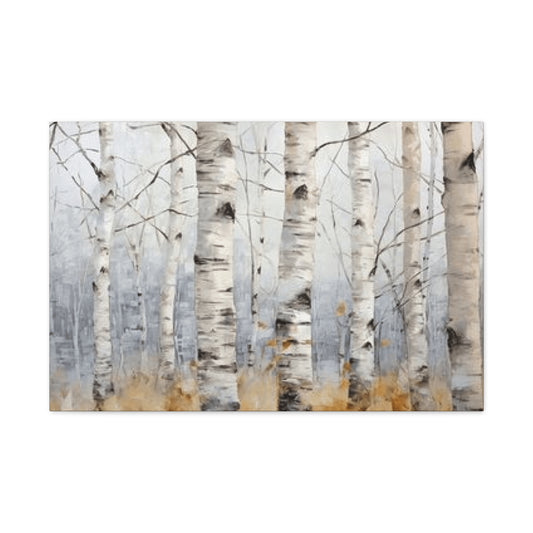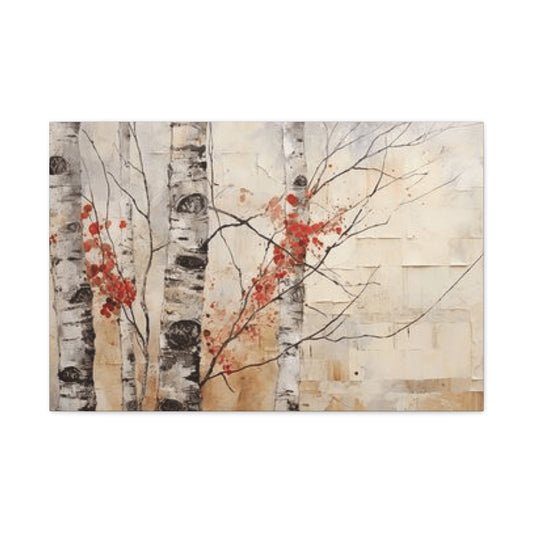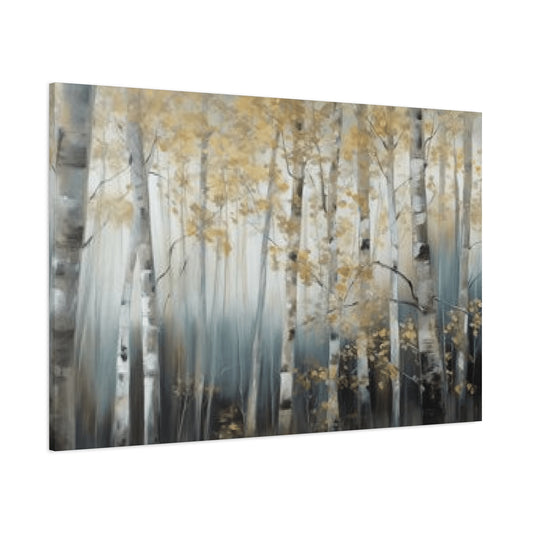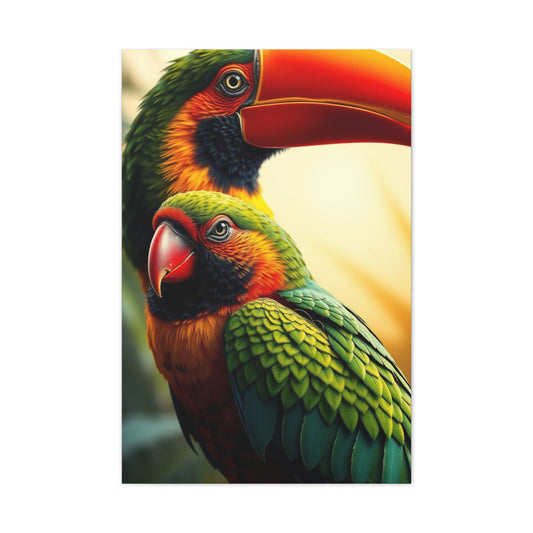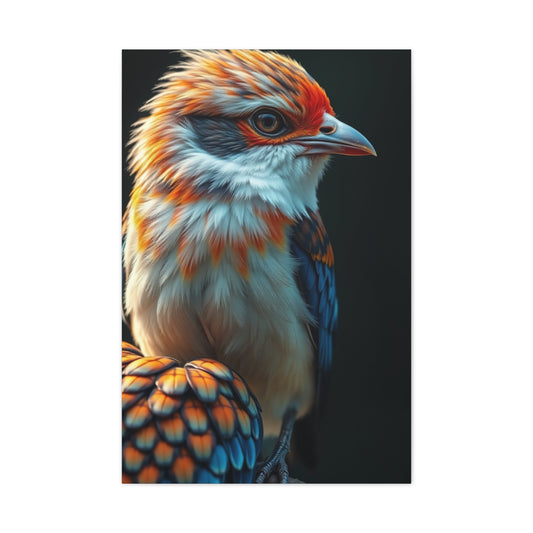Outdoor weddings are a dream for many couples, offering breathtaking backdrops and natural light, providing photographers with plenty of opportunities to capture stunning, memorable moments. However, while the outdoors can present magnificent scenery, it also brings its own set of challenges. From fluctuating lighting conditions to unpredictable weather, outdoor wedding photography requires preparation, understanding of light, and the right techniques to achieve the perfect shot. To help you get the best possible wedding photos, here are 10 essential tips that will ensure you capture breathtaking outdoor wedding images.
Mastering Lighting for Gorgeous Outdoor Wedding Shots
One of the most significant advantages of outdoor weddings is the natural light, but it can also be one of the most challenging aspects to handle. Whether it's the bright midday sun or the soft glow of the golden hour, mastering lighting is crucial to creating flattering, beautiful wedding photos.
The midday sun, while providing plenty of light, can create harsh shadows and overly bright highlights. This is often referred to as "bad lighting," and it can make it difficult to properly expose the photo. To avoid this, you should try to shoot during the golden hour, the period shortly before sunset or just after sunrise when the light is soft, warm, and flattering. This period not only helps avoid the harsh contrast of midday light but also gives a romantic, soft glow to your photos, making it ideal for capturing tender moments between the couple.
On a particularly sunny day, a fill flash or reflectors can help eliminate the harsh shadows and evenly light your subjects. Even on cloudy days, when light is diffused, it’s important to understand how to adjust your camera settings to capture the best possible shot. Often, cloudy days are easier to manage as the clouds act like a natural softbox, providing even light. However, it’s still important to watch for any overexposure or underexposure, especially when working with portraits.
Guiding Couples on the Best Times and Locations for Their Photos
One of the most significant aspects of wedding photography, particularly for outdoor weddings, is ensuring the lighting and location are optimal for capturing stunning photographs. While a wedding ceremony and reception are filled with beautiful moments, the best photos often come from careful planning. Timing and location play a huge role in the overall aesthetic of wedding photos, and as the photographer, it's essential to advise the couple early on about what works best to achieve their desired results. Outdoor weddings bring an added challenge, as weather, time of day, and natural surroundings can either enhance or detract from the beauty of the photographs. Providing couples with guidance on these elements can make a significant difference in the final product, helping them achieve the wedding photos they've always dreamed of.
Timing the Wedding for Ideal Lighting
The first piece of advice to offer couples when planning their outdoor wedding is to avoid scheduling key moments during the middle of the day, particularly around noon. While the midday sun provides a lot of light, it is also a notorious culprit for creating harsh shadows, squinting, and stark contrasts. The angle of the sun at this time causes unflattering shadows, particularly under the eyes, chin, and nose, while overexposing areas such as the bride's white dress. While noon might seem like an appropriate time to have a wedding ceremony, it can make it much more difficult to capture soft, flattering photographs, especially for portraits and wide shots.
Instead, encourage the couple to schedule key moments like the ceremony or couple portraits during the golden hour. The golden hour, which occurs shortly before sunset or after sunrise, offers the best lighting for outdoor photos. This is the time when the sunlight is soft, warm, and diffused, creating a romantic and flattering effect. The sunlight during this time tends to wrap around the subjects, producing beautiful, natural tones and eliminating harsh shadows. Additionally, the golden hour provides a sense of intimacy, with the couple basking in a warm, natural glow, which is ideal for wedding photography.
Another advantage of timing key moments during the golden hour is the warmth it adds to the images. Wedding photos taken during this time typically have an ethereal and timeless quality, enhancing the colors of the skin, flowers, and surrounding environment. In contrast, harsh midday light can make images look flat and dull. This soft, golden light is ideal for creating wedding portraits that are romantic, stunning, and filled with depth.
Suggesting the Best Locations for Outdoor Wedding Photos
While timing is crucial, selecting the right location for the wedding ceremony and photoshoot can also drastically affect the overall feel of the images. The venue's layout and natural surroundings should enhance the photos, not distract from the main subject. Choosing locations that provide even lighting and avoid direct, harsh sunlight will help the photographer create images that are flattering and visually appealing.
For outdoor ceremonies, it's important to suggest a spot that offers shade or natural cover, such as beneath trees, awnings, or overhangs. Areas with shade will provide diffused light, which is ideal for photos as it prevents the harsh contrasts and shadows created by the sun. For example, a ceremony held under a large, leafy tree provides soft, even lighting, which helps reduce squinting and harsh shadows. It also gives the photographer more control over the lighting without the need for extra equipment like reflectors or fill flash.
If the ceremony must be held in direct sunlight, it’s helpful to suggest scheduling the ceremony during the early morning or late afternoon when the sun is lower in the sky. These hours allow the couple to avoid the peak midday sun while still benefiting from plenty of natural light. If possible, consider the direction of the sun and how it will affect the positioning of the couple and the guests. For example, having the couple face the sun may cause them to squint, while positioning them with the sun behind them could create a stunning backlight effect, highlighting their silhouettes in a dramatic way.
|
Related Catagories: |
Adjusting for Light Changes Throughout the Day
As the day progresses, lighting conditions can change dramatically. For example, as the sun moves across the sky, the angle and intensity of light shift, which can alter how photographs turn out. When planning for outdoor wedding photos, it's important to consider how the light will change during the event. When working with outdoor venues, it's crucial to have a flexible schedule to accommodate these changes.
If the wedding ceremony is held in the middle of the day, but there are still moments later when the light is better, be sure to suggest taking some portraits or group shots during the golden hour. Even if the ceremony has already passed, taking some intimate shots of the bride and groom just before sunset can create beautiful, memorable images. Since outdoor light is constantly shifting, having a flexible timeline and offering guidance about timing for photos can be an effective way to ensure that the couple’s day is photographed in the best light possible.
Moreover, understanding that natural light is not always predictable is vital. Sometimes, clouds or other environmental factors can impact how the light will behave. As a photographer, being ready to adapt to these changing conditions is essential. For example, if the sky becomes overcast and the sunlight is no longer available, a photographer should have the skills to adjust their settings to ensure the photos still have enough exposure and are not too dark. In these situations, cameras with the ability to adjust for dynamic range are extremely helpful.
Creating a Flexible Schedule for Photos
While it's important to aim for specific lighting conditions, flexibility in scheduling outdoor wedding photos is key. If the couple is set on having their ceremony at noon in an open field, they may not realize how difficult it will be to get beautiful photos during this time. That's why suggesting a photo session before or after the ceremony, when the sun is more cooperative, is essential.
One approach is to arrange for the couple to take pre-ceremony portraits during the early hours of the day, when the lighting is softer, and save the formal photos for after the ceremony during the golden hour. Similarly, suggest taking a post-ceremony walk to a nearby location for a photo session before the sun sets. These creative time adjustments can help you capture more images in better lighting, ensuring the couple’s album tells the full story of their day.
It’s also worth suggesting a few back-up locations in case the couple’s desired outdoor setting doesn’t turn out as expected. If rain or other weather conditions interfere with their original plans, having a location that provides shade or a sheltered area will ensure the wedding photos don’t suffer. This way, if it starts to rain or a gust of wind affects the ceremony set-up, you can still take stunning portraits in alternate locations without losing time.
Be Ready for Every Weather Condition: Outdoor Wedding Photography Survival Guide
Outdoor weddings offer beautiful, natural light and unforgettable scenic settings, but they also expose photographers to nature's unpredictability. From sudden rain showers to gusty winds or biting cold, you must be thoroughly prepared to handle any scenario the elements might present. While many couples plan for sunshine and ideal conditions, reality often paints a different picture. As a wedding photographer, your role is not just to document moments but to adapt gracefully and keep the shoot going under any weather condition.
Thorough preparation will not only help you protect your gear and stay comfortable, but it can also lead to unexpectedly magical images. Here are comprehensive tips for weather-proofing your outdoor wedding photography sessions and making the most of any meteorological surprises.
Preparing Yourself and Your Gear for the Outdoors
Outdoor wedding photography demands a high level of physical preparedness. Unlike indoor venues, where you operate within controlled environments, outdoor settings can expose you to rugged landscapes, uneven surfaces, muddy fields, and fluctuating temperatures. That’s why wearing the right clothing and footwear is essential. Always choose waterproof, durable shoes or boots that provide excellent grip on wet or rocky terrain. Layer your clothing according to the season, so you stay warm in cold conditions and cool in warmer climates.
For your photography gear, protective accessories are a must. Rain covers for your camera bodies and lenses will shield them from moisture. These are small, inexpensive investments that can save your equipment from serious damage. Keep lens cloths or microfiber towels in your bag to wipe off raindrops or condensation during sudden weather shifts. Also, consider keeping a few zip-lock bags or dry pouches in your kit to store memory cards, batteries, and small accessories that need to stay dry.
Even on dry days, the wind can pose a threat by blowing dust or debris into your lens or destabilizing your lighting setup. Weighted light stands, clamps, and sandbags can help anchor equipment in breezy environments. When photographing during winter months, be aware that cold weather tends to drain battery life much faster. To combat this, carry multiple fully charged batteries and keep them in a warm pocket so they stay active longer.
When working under intense sunlight, not only should you protect your skin with sunscreen, but your camera should also be shielded from overheating. Use lens hoods to reduce glare and protect the front element from sun and dust. Having a collapsible sunshade or working from a shaded area can also help you monitor screen visibility when reviewing images on your LCD display.
Embracing Rain and Making It a Creative Element
Rainy days can initially cause anxiety for both photographers and couples, but with the right mindset and preparation, they can lead to some of the most emotive, artistic wedding photographs. Rain adds a certain mood and visual texture that sunny weather can’t replicate. The reflections on wet surfaces, soft light from overcast skies, and cozy moments under umbrellas can all contribute to dreamy and cinematic imagery.
|
Related Catagories: |
Before the wedding day, have a conversation with the couple about the possibility of rain. Set expectations early and present it not as a limitation, but as a creative opportunity. Explain how you can still take beautiful photos, even in the rain, and reassure them that a little water won’t stop the celebration—or the magic of their images.
Clear umbrellas are excellent tools for rain-friendly wedding portraits. They allow light to pass through while keeping the couple dry. Keep a few in your car or gear bag in neutral colors that will complement any wedding theme. You can also buy bulk sets of transparent umbrellas to accommodate the entire bridal party for group shots.
Incorporate raindrops creatively into your compositions by using backlighting with a portable flash or video light. This will make the droplets sparkle, adding an ethereal quality to your photos. If the couple is up for it, even puddles can be used for reflections, turning a typically undesirable element into a compelling compositional tool.
It's also important to scout backup locations that offer some form of cover—be it a gazebo, tent, overhang, or archway. These areas provide opportunities for drier shooting zones while still capturing the ambiance of the day. If the ceremony moves under a canopy, plan your angles beforehand so you can still document the moment without obstruction.
Managing Temperature Extremes with Confidence
Outdoor weddings held during colder seasons or in alpine locations present a different set of challenges. Low temperatures can affect not just your gear but also the comfort of your subjects. Bridesmaids in sleeveless dresses may not be thrilled to stand outside for long portrait sessions in freezing weather, and that discomfort will show in the photos. Be quick and efficient in your poses, and select locations where the wind chill is minimized.
Bring hand warmers, not just for yourself, but as a kind gesture for the couple and bridal party. Keeping hands warm will help subjects stay relaxed and natural in front of the camera. Encourage the couple to bring along elegant shawls or jackets that complement their attire. These additions not only keep them warm but can also enhance the visual narrative of the photo.
For your camera, the cold can reduce performance, cause condensation, or fog up your lens when transitioning between indoor and outdoor settings. To minimize lens fog, let your gear acclimate slowly to temperature changes. Keeping silica gel packs in your bag can also help absorb moisture that builds up from condensation.
In contrast, hot summer weddings can also be physically demanding. Long hours in the sun can lead to fatigue or overheating. Hydration is key—for both yourself and the couple. Keep a bottle of water handy and encourage breaks in the shade. Monitor your camera’s performance to avoid overheating, especially when shooting video or long exposure shots.
If the sunlight is too harsh, seek areas where dappled light filters through trees or where buildings cast natural shadows. High summer sun can create deep, unflattering shadows on people’s faces, so always be on the lookout for ways to diffuse the light or use a fill flash to soften the exposure.
Staying Professional No Matter the Forecast
Regardless of the weather, the couple is relying on you to deliver beautiful images that encapsulate their day. Part of being a professional outdoor wedding photographer is knowing how to stay calm, adapt, and creatively pivot in less-than-ideal conditions. Your confidence in challenging environments will help put the couple at ease, making them feel that their wedding is in safe hands—rain or shine.
While some photographers dread poor weather, embracing it can make you stand out. Not only do challenging weather conditions demand technical skill, but they also unlock a visual mood that sunny skies simply can’t replicate. Rain-kissed moments, wind-blown veils, and fog-shrouded landscapes offer cinematic scenes that elevate your portfolio.
Preparation is the secret weapon. Have a mental checklist of gear essentials for every type of weather. Communicate clearly with the couple about their backup plans and your ideas for alternative locations or shots. Offer reassurance, and demonstrate your ability to make the best out of any situation.
Even when the skies open up unexpectedly, the couple will remember that you were calm, collected, and creative. Your images will not just reflect their love, but also the spontaneity, resilience, and authenticity of their wedding day.
Leveraging Fill Flash for Balanced Lighting in Outdoor Wedding Photography
Outdoor weddings offer many advantages when it comes to capturing stunning photos. From beautiful natural backdrops to the romantic golden hour light, the possibilities are endless. However, one of the most challenging aspects of outdoor wedding photography is managing lighting. The light can be unpredictable, especially with the fluctuating intensity of sunlight and shadow patterns in outdoor environments. This is where fill flash becomes an essential tool in a photographer’s kit.
Fill flash is a technique used to balance out the exposure of an image, particularly when dealing with harsh natural light. It can ensure that both the bright areas and the shaded areas are properly lit, eliminating the harsh shadows often created by direct sunlight. Whether shooting in full sunlight or under diffused light, using fill flash can help photographers create images with more even lighting and bring out details that might otherwise be missed. In this article, we will explore why fill flash is a crucial technique for wedding photographers and how to use it effectively to achieve well-balanced, beautifully lit wedding photos.
Why Fill Flash Is Essential in Outdoor Wedding Photography
Outdoor lighting conditions can often be inconsistent, making it difficult to achieve a well-balanced exposure. In the absence of controlled studio lighting, photographers must rely on the natural environment to illuminate their subjects. Unfortunately, natural light is not always flattering, especially when shooting during midday hours or when the sun is directly overhead.
One common problem is the harsh shadows cast on the couple’s faces when they are positioned in direct sunlight. The result is often a high contrast between the bright areas, such as the sky or background, and the dark shadows on the subjects. These shadows can be unflattering, particularly around the eyes, chin, and neck, making it challenging to capture clear, crisp images.
This is where fill flash comes in. By using a flash to subtly light the shaded areas, a photographer can reduce the harsh contrast caused by the bright sunlight. Fill flash allows photographers to add just the right amount of light to bring out the details in shadowed areas, without overexposing the bright highlights in the background. Essentially, fill flash helps balance the light in a way that ensures the entire image is properly exposed.
Additionally, fill flash is a great way to enhance contrast and bring out the finer details in portraits. Sometimes, natural light alone can flatten an image or fail to highlight intricate details, like the texture of the bride’s dress or the intricate lace on her veil. Fill flash can help illuminate these details, creating more dimension and making the subjects pop from the background. This is especially helpful when photographing close-up portraits or shots with delicate details that need extra emphasis.
How to Use Fill Flash Effectively for Outdoor Weddings
While fill flash is an incredibly useful tool, it’s important to know how to use it correctly to avoid over-flashing or creating unnatural lighting. The key to effective fill flash is subtlety. Unlike a full flash, which is used to light up an entire scene or subject, fill flash is intended to gently fill in the shadows and balance the light across the image. Here’s how you can use fill flash effectively during an outdoor wedding shoot:
Assessing Lighting Conditions
Before using fill flash, it’s essential to evaluate the existing lighting conditions. Understanding the dynamic range of natural light helps you determine whether fill flash is necessary and how to use it effectively. If you are shooting in direct sunlight, where the contrast between the bright areas and shadows is strong, fill flash will help soften the harshness and create a more even exposure.
In situations where the sun is partially blocked by clouds or the couple is standing in shade, you may not need to use flash at all. The diffused natural light is usually soft enough that it doesn’t create noticeable shadows. However, even in shaded areas, fill flash can still be used to enhance the details in the shadows, especially in portraits or close-ups where a little extra light can make the image appear more vibrant.
Using Fill Flash with Varying Backgrounds
When photographing a couple walking down the aisle or posing in front of a backdrop with varying levels of light, fill flash becomes a must. Alternating patches of sunlight and shade are common when the couple is moving across an outdoor setting, such as a garden or an open field. In these situations, the flash helps maintain a consistent exposure across the entire scene.
For instance, if the couple is walking down the aisle with sunlight on the background and the shaded area on the couple, the fill flash can be used to bring light to their faces without affecting the well-lit background. This ensures that the couple is properly illuminated, while still capturing the vibrant background and keeping the exposure balanced.
In scenarios like this, be cautious about the strength of your flash, as overpowering the flash can create a stark difference in exposure between the subject and the background, ruining the natural look. Aim for a flash setting that just fills in the shadows without overwhelming the light from the environment.
Adjusting the Flash Output
When using fill flash, you have the option to adjust the flash output based on the lighting conditions and the subject’s position. Start with a low flash power setting, especially if you are working with natural light that is already providing good exposure. The goal is to supplement the existing light rather than overpower it. You can experiment with different flash power levels to find the perfect balance.
A good rule of thumb is to use flash power that is no more than one or two stops below the natural light exposure. This ensures that the flash doesn’t create an unnatural lighting effect, but instead works harmoniously with the surrounding light. Also, using bounce flash techniques, such as bouncing the flash off a wall, ceiling, or even the ground, helps diffuse the light, resulting in a softer and more flattering fill effect.
Tips for Using Fill Flash in Specific Wedding Photography Situations
Wedding Portraits in Full Sun
Wedding portraits taken under the bright midday sun can present significant lighting challenges. Without fill flash, the bride and groom’s faces may be covered in deep shadows, making their expressions difficult to see. By using fill flash in these conditions, you can lighten the shadows and reveal more detail in the couple’s faces, without disturbing the overall natural light of the scene. Set your flash to a low intensity and aim it directly at the couple to soften the shadow areas.
Photographing the Couple Under a Canopy or in the Shade
When shooting wedding portraits in a shaded area, such as under a tree or a canopy, the ambient light may be dimmer than in the surrounding areas. This can cause the couple to appear underexposed, as the camera may meter for the bright outdoor environment and fail to properly expose them. In this case, fill flash helps brighten up the shaded areas and bring out the details in the couple’s faces and clothing.
Be mindful of your flash power in these situations. Because the light is already soft and diffused under the shade, you don’t want to use too much flash, as this could cause overexposure or create unnatural lighting. Use just enough flash to fill in the shadows and enhance the portrait.
Using Fill Flash During Sunset or Golden Hour
Golden hour provides some of the most flattering natural light for wedding photos, but it can also create backlighting issues. When shooting into the sun, the couple may appear dark against the glowing background. To counteract this, use fill flash to light the couple’s faces and bring out the details in their attire while still maintaining the stunning background light. The key here is to balance the exposure between the background and the couple to preserve the glowing sunset and ensure that the couple isn’t lost in the shadow.
Protect Highlights by Managing Exposure Properly
One of the biggest challenges when shooting outdoor weddings is managing uneven lighting. A bright, sunny day can cast harsh light in some areas, while shadows can obscure details in others. For this reason, it’s essential to monitor exposure carefully to avoid losing important details, especially in high-contrast situations.
When adjusting your exposure settings, it's safer to underexpose rather than overexpose your image. For example, a bride’s white dress can easily become overexposed, losing texture and detail in bright sunlight. It’s important to ensure that the highlights, especially on white dresses or wedding veils, are properly balanced. This can be achieved by using a semi-manual shooting mode, where the camera adjusts the ISO automatically in response to lighting changes or by using spot metering, which allows for more precise control over the exposure, ensuring the highlights stay within a manageable range.
Eliminate Background Distractions for Focused Shots
One of the challenges of shooting outdoors is dealing with the often cluttered backgrounds. Outdoor venues are beautiful, but they can include distractions such as cars, power lines, or other objects that may divert attention from your subjects. As the photographer, it’s your job to pay attention to these elements and ensure that they don’t detract from the shot.
Take the time to adjust your angle, change your position, or swap lenses to avoid any distracting elements in the background. Simple techniques like repositioning the couple slightly or altering the composition can help remove distracting features and ensure that the couple is the focus of the shot. Additionally, being aware of the backdrop can save you time in post-processing, reducing the need to spend time editing out unwanted elements.
Capture the Venue’s Beauty with Wide-Angle Shots
While close-up shots of the bride and groom are essential, don't forget to capture the surrounding venue, as it is an integral part of the couple’s day. Using a wide-angle lens allows you to showcase the grandeur of the location, whether it’s a beautiful garden, a vineyard, or a stunning outdoor terrace.
Incorporate the venue into your wide shots, highlighting the beauty of the surroundings and telling a complete story. These images add depth to the wedding album, ensuring that the couple’s chosen location becomes an unforgettable part of their wedding memories. Whether it's a panoramic shot of the ceremony or candid moments during the reception, wide-angle shots will add a dimension of beauty and atmosphere to your work.
Enhance the Sky Using a Polarizing Filter
A polarizing filter is an invaluable tool for outdoor wedding photographers. It helps reduce reflections and glare, particularly from surfaces like water or glass, but it also makes the sky look richer and more vibrant. On a sunny day, the sky can sometimes appear washed out, but by using a polarizer, you can make the sky appear a deeper, more intense blue. The filter can also enhance the colors of foliage, flowers, and other natural elements, helping your images pop.
A polarizing filter should be used carefully, especially when you’re shooting at the end of the day or indoors, as it can reduce light transmission and might not be ideal in low-light conditions. But for bright, sunny wedding days, it’s the perfect accessory to add drama and color to your outdoor photos.
Photograph Formal Portraits in Shaded or Backlit Areas
For the couple’s formal portraits and group shots, choosing the right lighting is key. Shaded areas or spots that provide backlighting from the sun create the best conditions for soft, even lighting. Direct sunlight can create harsh shadows and cause your subjects to squint, but positioning them in the shade or with the sun behind them creates flattering, soft lighting that highlights the natural beauty of the couple and their party.
Position the couple or bridal party to face the light or have the light source behind them, using an off-camera flash or reflector to add dimension and highlight their faces. This creates a dreamy, glowing effect that enhances the photos. The lighting in these scenarios is often more forgiving and visually appealing, especially when shooting portraits in the late afternoon or evening.
Nighttime Portraits: Adding Creative Shots to the Wedding Album
While most of the wedding photos are taken during daylight, consider adding a nighttime portrait session to your shooting list. Nighttime wedding photos offer a unique, dramatic perspective that daytime shots simply can’t provide. Using off-camera flash or video lights, you can illuminate the couple and create a beautiful contrast between them and the dark surroundings.
Nighttime shots can feature creative lighting, such as ambient string lights, lampposts, or even distant city lights, to enhance the mood and make the photos even more romantic. These shots will set your work apart and provide the couple with stunning, dramatic images that capture the magical moments after sunset.
Rainy Day Photos: Making the Best of Wet Conditions
While rainy weather can be a concern for any outdoor wedding, it doesn’t have to ruin the photos. In fact, rainy day photos often turn out to be some of the most beautiful and unique wedding shots. When it starts to rain, consider using clear umbrellas, which complement the wedding aesthetic and create a beautiful effect in the photos.
With proper preparation, rainy-day photos can become a cherished part of the couple’s memories. Using off-camera flash to backlight the couple with raindrops sparkling around them can create a magical, fairy-tale effect. Embrace the rain, and it will help you create unforgettable images that tell the true story of the day.
Conclusion: Mastering the Art of Outdoor Wedding Photography
Outdoor wedding photography is full of opportunities to capture breathtaking images, but it also presents unique challenges. By preparing for varying lighting conditions, weather conditions, and minimizing distractions in the background, you can ensure that every shot is perfect. With the right equipment, creative vision, and a solid understanding of how to work with natural light, you can create a beautiful, cohesive album that tells the complete story of the couple’s special day. These tips will help you navigate the challenges of outdoor wedding photography and deliver photos that the couple will treasure for years to come.









